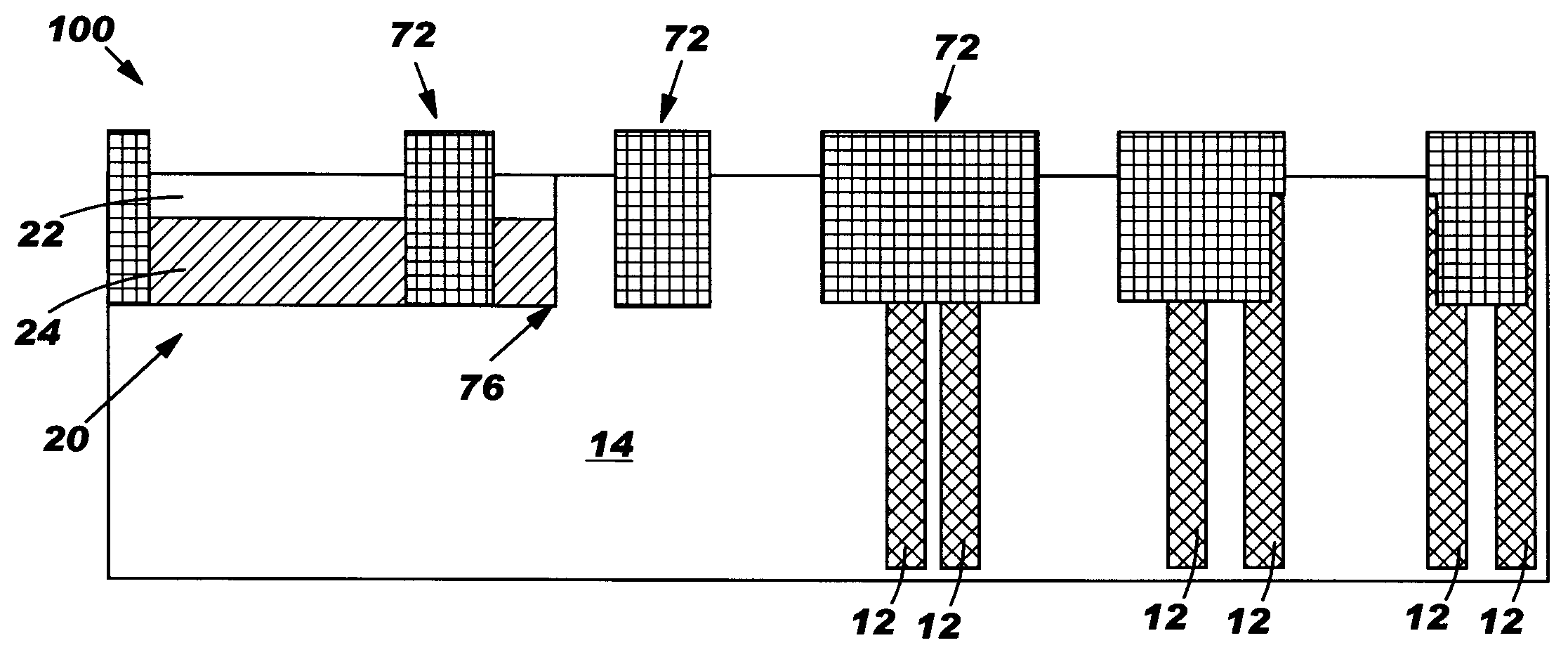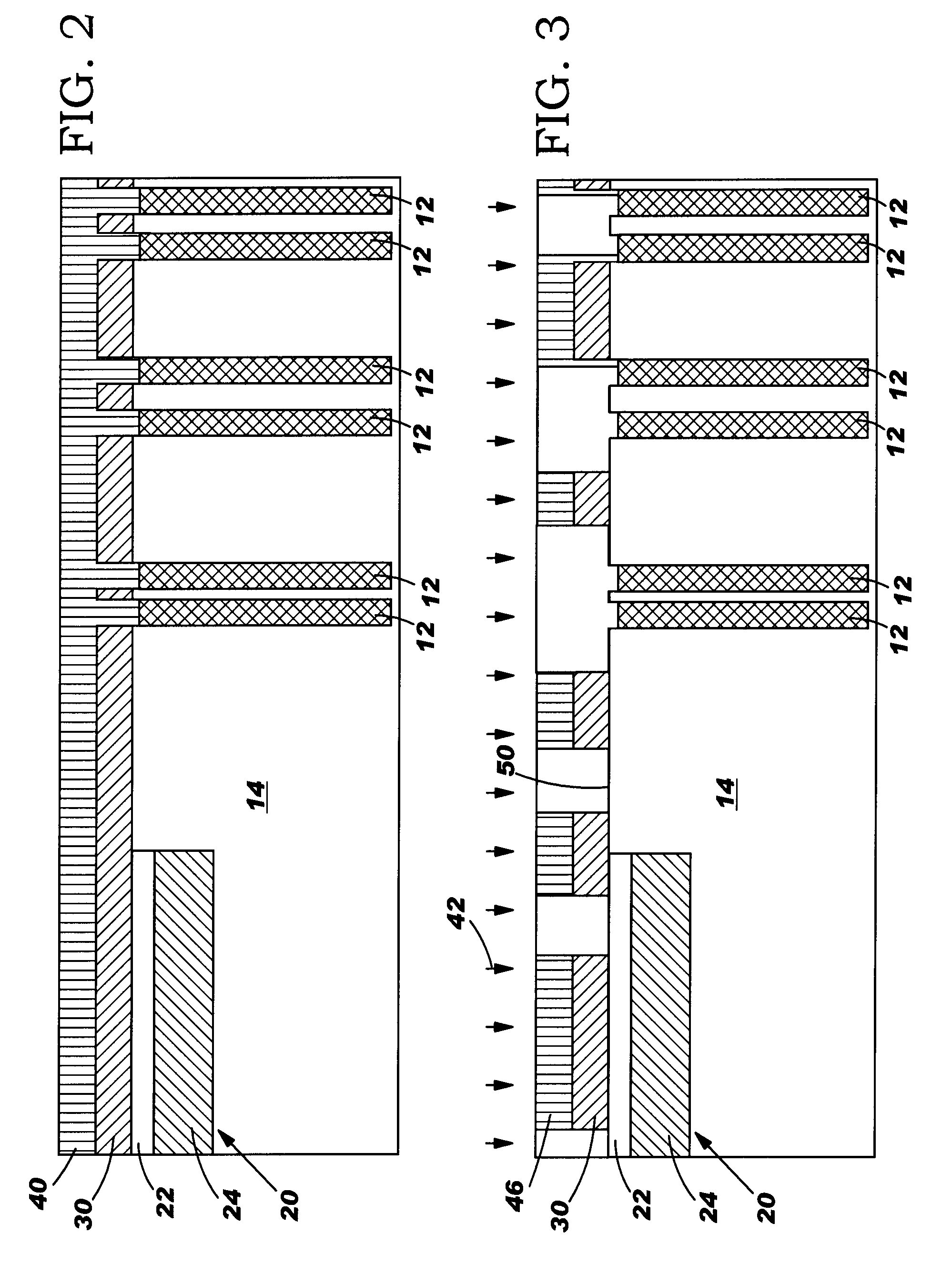STI formation in semiconductor device including SOI and bulk silicon regions
a technology of semiconductor devices and bulk silicon, which is applied in the direction of semiconductor devices, solid-state devices, transistors, etc., can solve the problems of increasing the demand for integrated circuit customers having more functionality, complex above-described processes, and insufficient isolation in the bulk area, so as to avoid the problem of a subsequent cmp process and reduce complexity
- Summary
- Abstract
- Description
- Claims
- Application Information
AI Technical Summary
Benefits of technology
Problems solved by technology
Method used
Image
Examples
Embodiment Construction
[0018]With reference to the accompanying drawings, FIG. 1 illustrates a cross-sectional view of a typical wafer 10 after deep trench 12 formation in a bulk silicon region 14, and prior to the silicon trench isolation (STI) hardmask deposition. Wafer 10 includes a silicon-on-insulator (SOI) region 20 including a silicon layer 22 on a buried insulator 24. Also included on wafer 10 is a pad layer 30 of, for example, silicon nitride and silicon dioxide.
[0019]In one embodiment, buried insulator 24 material is silicon dioxide, but other materials may also be used. For purpose of illustration only, silicon layer 22 of SOI region 20 may have a thickness of approximately 700A and buried insulator 24 of SOI region 20 may have a thickness of approximately 1350A. Pad layer 30 may have a thickness including approximately 80A of silicon dioxide (not shown due to scale) and approximately 1200A of silicon nitride. It should be recognized, however, that the teachings of the invention are not limited...
PUM
| Property | Measurement | Unit |
|---|---|---|
| depth | aaaaa | aaaaa |
| thick | aaaaa | aaaaa |
| thickness | aaaaa | aaaaa |
Abstract
Description
Claims
Application Information
 Login to View More
Login to View More - R&D
- Intellectual Property
- Life Sciences
- Materials
- Tech Scout
- Unparalleled Data Quality
- Higher Quality Content
- 60% Fewer Hallucinations
Browse by: Latest US Patents, China's latest patents, Technical Efficacy Thesaurus, Application Domain, Technology Topic, Popular Technical Reports.
© 2025 PatSnap. All rights reserved.Legal|Privacy policy|Modern Slavery Act Transparency Statement|Sitemap|About US| Contact US: help@patsnap.com



